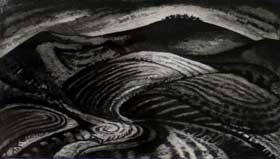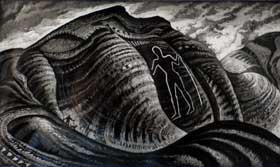Weather: Cloudy and Humid becoming Sunny and Warm
Distance Walked: 12.2 km
Distance By Tube: 10.0 km
Stations Visited: 10
Fantastic Place: Primrose Hill
 |
| Metropolitan Line Map (from http://en.wikipedia.org/wiki/Metropolitan_line) |
|
 |
| The 10 Stations |
|
So the first leg of a new challenge. I'm not sure if I've ever travelled to Aldgate before, I certainly didn't recognise the area when I got out! Turning around the first thing I saw was the skeleton of a wooden framed building.
According to the plaque on the ground this marks the location of the historic
Aldgate where Chaucer lived from 1374 to 1386. Behind it is one of the iconic new buildings that are dominating the London skyline - the Gherkin. The timber building is inspired by two poems by Chaucer while resident in the two rooms above the now long demolished gate.
The route between Aldgate and Liverpool Street is made more complicated by the amount of building work that is taking place in the heart of London at the moment. Below ground you have the Crossrail project that is well under way now. This means that streets are blocked off as they build new stations, extend existing ones and insert new ventilation shafts and what not.
Around
Liverpool Street I found my favourite street name of the walk; Frying Pan Alley. The area has gone upmarket a bit since
Jack London wrote about it and there are now parts of the University of East Anglia nearby, many upmarket sandwich shops, wine bars and other services for those travelling into and out of London via one of the busiest mainline termini.
As a part-time baker and the son of a professional baker I liked the images above a sandwich shop near the station. It's a narrow street and I wonder how many people spot these on their rush to buy lunch?
Moving on past Liverpool Street I encountered the first of many diversions due to building above ground as well as more Crossrail works. New office towers are being squeezed into whatever space is available, whether it be by demolishing an ugly 1960's block or into the space between existing towers. One of the spaces I was looking forward to seeing was Finsbury Circus, an oval oasis of green in the glass and concrete world of the city. However this was currently occupied by some of the aforementioned Crossrail works and only a small part was visible. What was open to view looked very nice though and my walking of another of the lines may bring me back.
More diversions on the route to
Moorgate station and then a trudge past, around and under the Barbican centre to
Barbican station. I should have walked through the centre rather than around it but I missed the entrance! I always fancied living in the Barbican if I had to live in the centre rather than being able to live in the suburbs. Lots of culture including the Museum of London on your doorstep and some interesting, others may call it ugly and brutalist, architecture.
Between Barbican station and
Farringdon I walked along the appropriately named Cowcross street, appropriate as this leads from the fabulous edifice of Smithfield market, the largest meat market in the UK and one of the largest in Europe. There has been a market on the site since the Middle Ages and the current building dates back to the 1850s.

It was also the place that Wat Tyler, leader of the Peasants' Revolt was executed. Sadly there are plans at the moment to demolish part of the historic market as part of a redevelopment plan.
From Farringdon you enter Clerkenwell, a arty-crafty part of London and as I have been before, I was surprised to come across
St John's Gate which spans St John's Lane and which was part of a priory owned by the Knights Hospitallers. It's not often I manage to go on a walk that combines two of my favourite hobbies - cooking and Dungeons and Dragons!

After the pretty and historic area around Clerkenwell its a bit of a shock to emerge into the busy, bustling and rather shabby area around
King's Cross and St. Pancreas and it is a relief to get off the main drag and into some side streets for a moment, though not before you pass two of my favourite buildings; St Pancreas Station and the British Library.
In one of the quiet squares south of King's Cross there is a statue of Gandhi, a nice peaceful reflective space in amongst the hubbub of the city.
However before long you are back on the main drag to visit
Euston Square station and then not much further along, but feeling it because of the busy Euston Road,
Great Portland Street station.
More trudging along this busy arterial route follows but at least there are some interesting buildings on either side, along with a huge queue of people outside Madame Tussauds. Now as a Londoner there are many of the famous tourist destinations that I have never got round to visiting, but I will do one day. This however is one that wild horses wouldn't drag me into! Especially when I saw how expensive it was - phew!
Baker Street station is just off of Euston Road and outside it is a plaque celebrating that this was part of the original underground network, built some 150 years ago. Humming
Gerry Rafferty's Baker Street as I turned up the street of that name I passed a crowd of tourists taking photos of the actor dressed as a Victorian bobby outside of the famous detective's house at 221b before heading off into Regent's Park. The direct route would have taken me along the busy Finchley Road to the next station but this walk isn't about following the shortest route, but one that leads me through new and interesting places where possible.

Now Regent's Park is one of London's great open spaces and one that I had never visited before. It is a lot larger and in some places wilder than I imagined especially once you have crossed the bridge across the lake and headed into the northern half of the park. There are some nice sculpture in the park as well as great views of the Post Office tower.
Exiting the park past the London Zoo, no I've not been there either, not even as a kid when I was brought up to London by my long suffering elder sister as a birthday treat, you enter another fabulous open space Primrose Hill.
The views from the top of the hill are amazing and you realise how hilly London is with Hampstead and Harrow also on the walk on other parts of this line and elsewhere it won't be a flat trudge that's for sure.
 |
| Primrose Hill |
After finding my way out of Primrose Hill you pass through residential areas, in the garden of one house was a statue of Sigmund Freud, before plunging down a narrow and rather steep alley to rejoin the
Finchley Road and the station of the same name.
 |
| Possible idea for my next D&D adventure... |
This is one of my regular stops as I have friends nearby but it was interesting to approach it from a new angle.
All in all a very enjoyable walk, it was good to get my boots back on and stride out after far too long thinking about what I was going to do rather than doing it. Looking forward to the next leg northwards along the line towards Wembley.




























